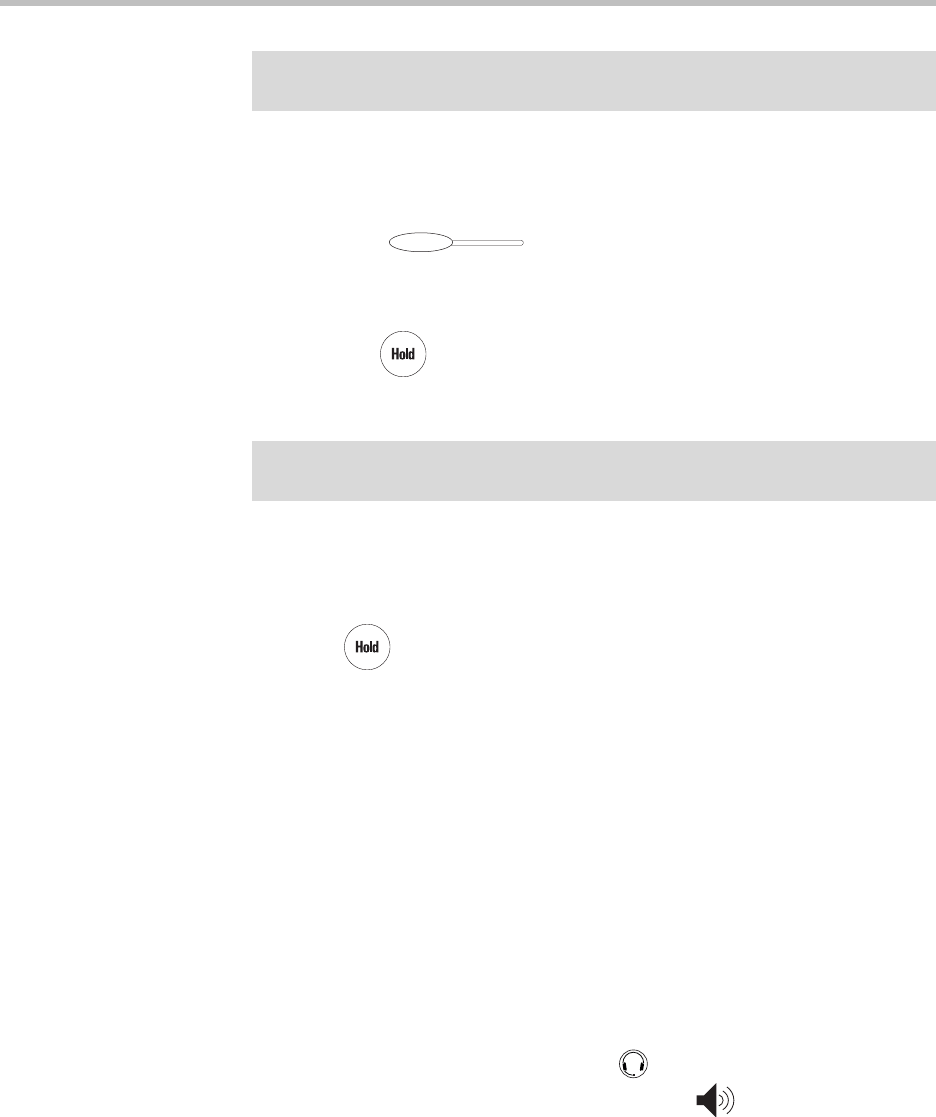User guide
Table Of Contents
- Changes to This Guide
- Contents
- Getting Started with Your SoundPoint® IP 650 Desktop Phone
- Customizing Your SoundPoint® IP 650 Desktop Phone
- Configuring Basic Settings
- Changing the Appearance of Time and Date
- Changing the Display Contrast
- Changing the Backlight Intensity
- Enabling the Headset Memory Mode
- Selecting the Correct Headset for Electronic Hookswitch
- Selecting the Ring Type
- Changing the Language
- Changing the Graphic Display Background
- Muting the Microphone
- Adjusting the Volume
- Managing Call Lists
- Managing Contacts
- Managing Incoming Calls
- System Customizations
- Configuring Basic Settings
- Using the Basic Features of Your SoundPoint® IP 650 Desktop Phone
- Using the Advanced Features of Your SoundPoint® IP 650 Desktop Phone
- Using the SoundPoint® IP Backlit Expansion Module
- Troubleshooting Your SoundPoint® IP 650 Desktop Phone
- Regulatory Notices
- Index

Using the Basic Features of Your SoundPoint
®
IP 650 Desktop Phone
3 - 7
To answer an incoming call on a line configured for multiple Line Keys:
>>
Do one of the following:
— Press next the flashing green indicator.
The first call is placed on hold and the second call become the active
call.
— Press or the Hold soft key to place the original call on hold.
Press the Answer soft key.
To answer an incoming call on a shared line:
1. Answer the incoming call.
2. Press or the Hold soft key.
Anyone on another phone configured to use the same shared line may
take the call by selecting the Line Key associated with the call on hold
(represented by a flashing red LED).
Ending Calls
To end a call:
>>
Do one of the following:
— If you are using the handset, press the EndCall soft key or replace the
handset.
— If you are using a headset, press .
— If your are using the speakerphone, press .
Note
You can forward incoming calls by pressing the Forward soft key. For more
information, refer to Dynamic Forwarding on page 3-21.
Note
You can forward incoming calls by pressing the Forward soft key. For more
information, refer to Dynamic Forwarding on page 3-21.










